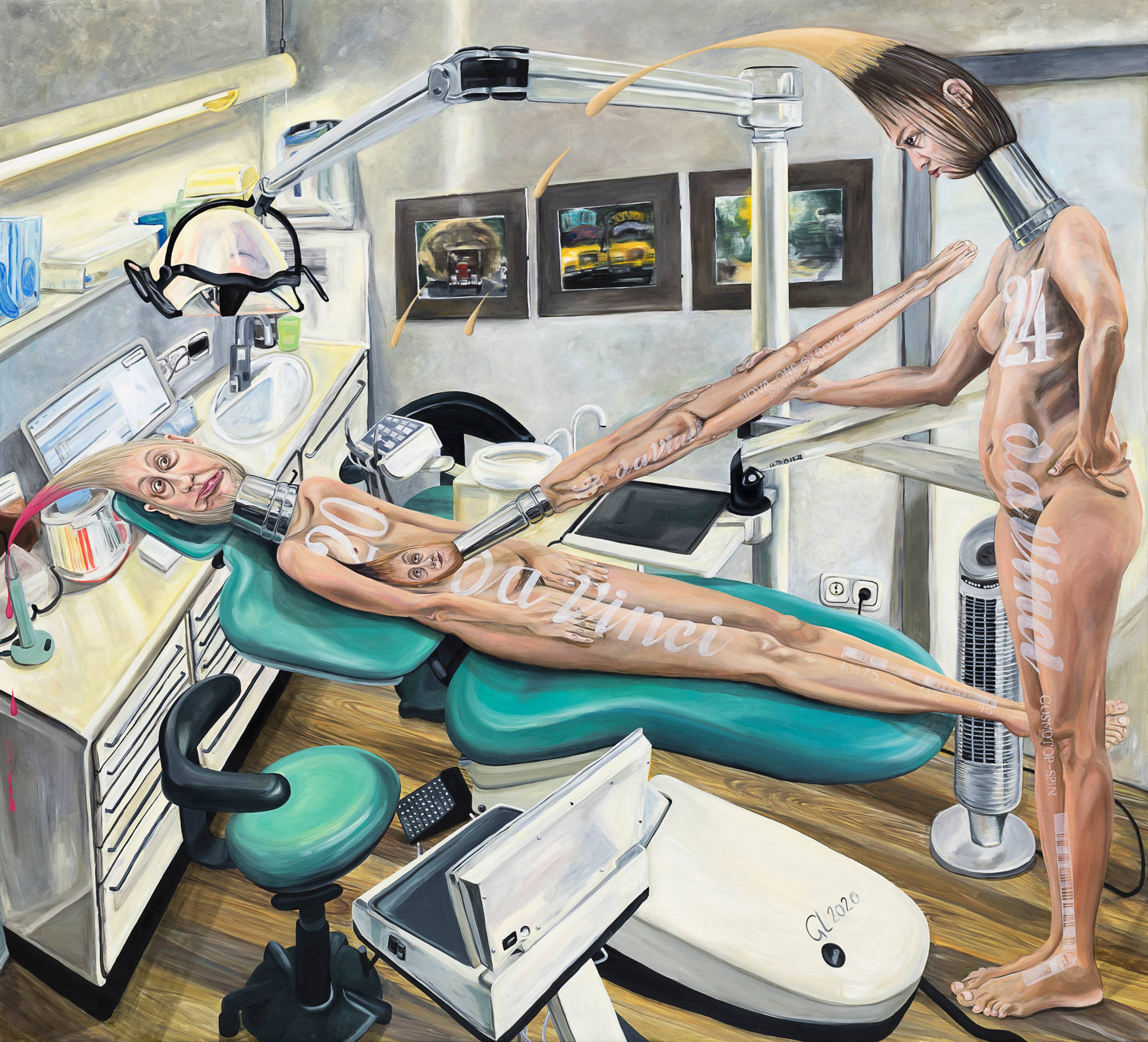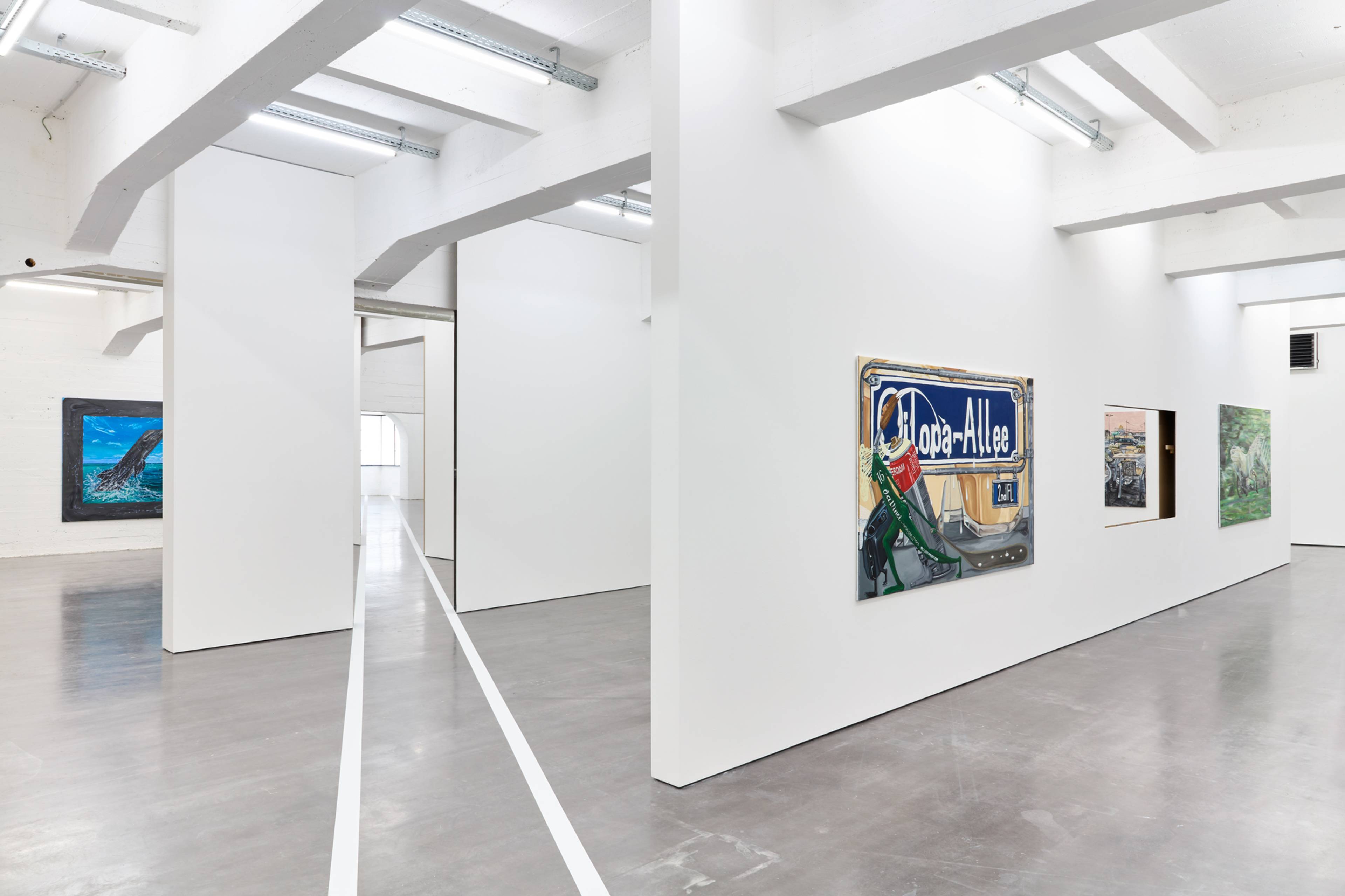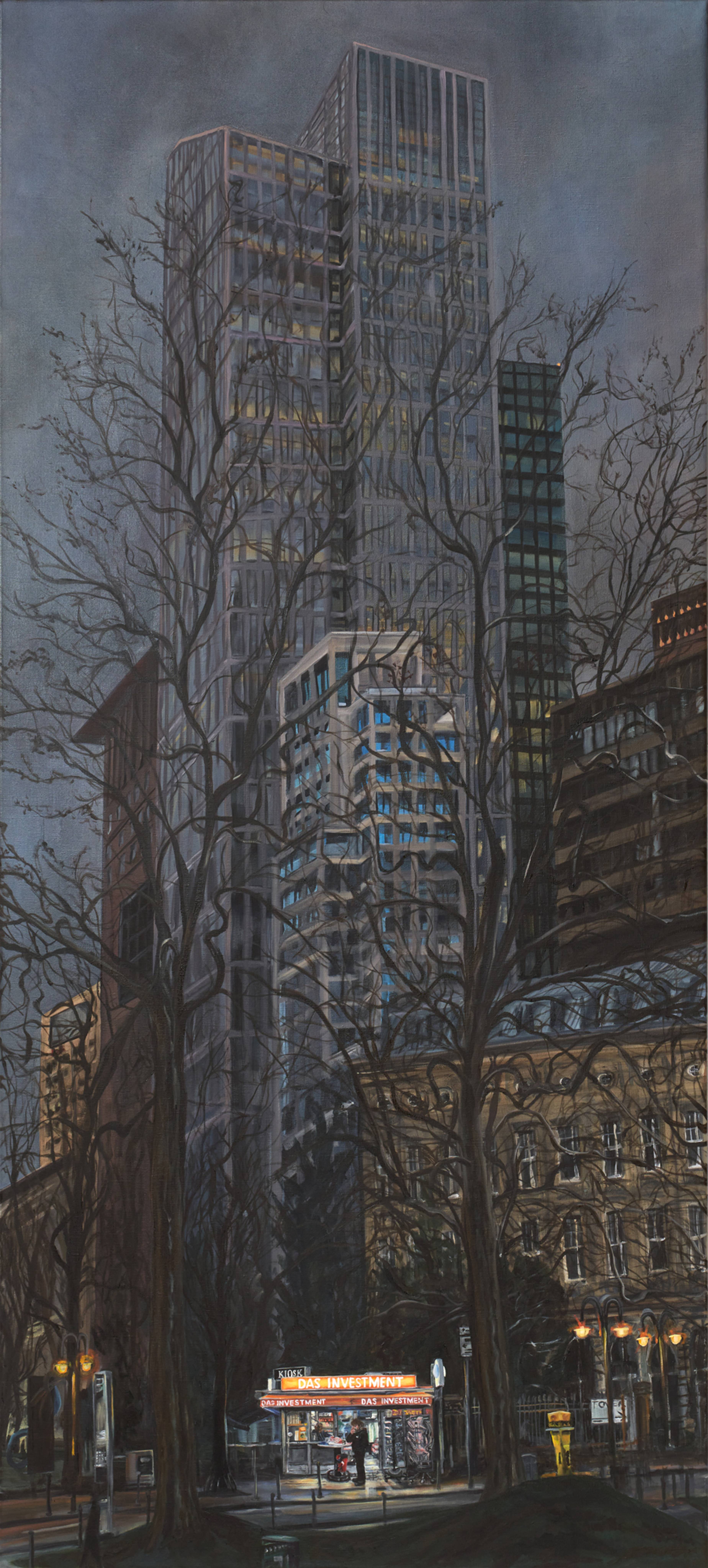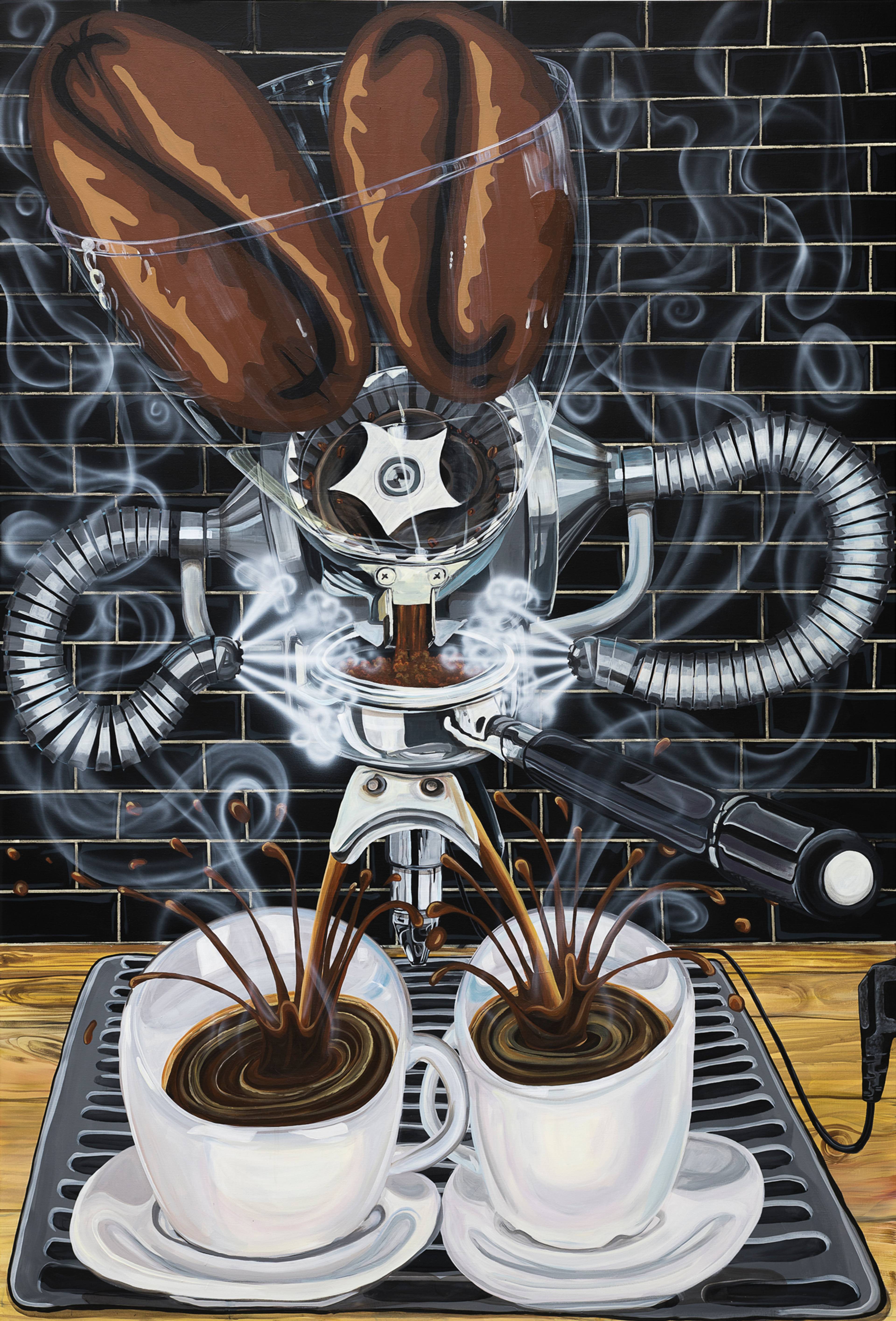With “Oilopa,” Jana Euler (*1982) has given Brussels the messy show it deserves. The painter’s casual survey at WIELS channels the EU capital’s chaotic energy and distills it in two eponymous paintings (In Brussels, 2013 and In Brussels 2024, 2024), where construction sites and traffic jams constitute sites of contemplation. The exhibition is organized around Oilopa-Allee (2024): Named after Frankfurt’s Europa-Allee, this diagonal path cut through the partition walls leftover from the previous show allegorically devises a “Trans-Europa Express” from the center of European politics to the Frankfurt’s financial headquarters. Across the second floor, this artery, along with four small paintings replicating the grids of WIELS’s ventilation system, tap into the anatomical network of the institution, connecting the exhibition’s various parts like distinct organs in Euler’s body of work.
Installed shortly after the European Parliament election, “Oilopa” speaks to the last decade of the continent’s neoliberal politics. In D-bank (2024), acrobatic dolphins mimic the logo of the Deutsche Bank, whose many scandals include the sale of toxic mortgages that precipitated the 2008 financial crisis. Das Investment (2023), a nighttime cityscape of Frankfurt’s downtown, situates a bright neighborhood kiosk in the shadow of the European Central Bank (ECB) and the MMK tower. Reversing the myth of princess Europa getting kidnapped by Zeus, Painting out of focus of Greece leaving Europe (2012) shows a mythological-looking figure from behind as it carries Greece towards the edge of the cosmos. An airbrushed memory of an event that did not quite occur, the painting resonates with Greece’s recent introduction of a “growth-oriented” six-day workweek – a logical outgrowth of the ECB’s devastating austerity measures.
View of “Oilopa,” WIELS, Brussels, 2024
Jana Euler, Das Investment, 2023, oil on canvas, 200 x 90 cm
This “out-of-focus” work optically rhymes with Camera becoming painting (2024) – a large, straightforward painting of a point-and-shoot camera which makes visitors “feel seen” as they enter the show. For Euler initiates, “Oilopa” feels like a house party of friends old and new, with one notable absence. The iconic sharks of her 2019 series “Great White Fear” (aka, the old white dicks of painting) are only present as a crowd of small, beige ceramics (Great white fear, 2021) tucked away in a corner, like the shriveled ghosts of late modernism’s masculine ethos. In sight (2024), a self-portrait of the artist grimacing as she anxiously looks over her shoulder and takes a selfie, is installed as a pun above the ceramic phalluses – Euler always attempting to catch painting in the act, thereby turning self-reflexivity into self-consciousness.
Known for critically embodying the conditions of its own production and circulation, her work is associated with the concept of “network painting” – a German tradition inherited in part from Martin Kippenberger and reinvested by theorists like David Joselit in the early 2010s to discuss painting’s “good mood.” By redefining self-reflexivity to include the social context and the economic or institutional networks that painting operates in, the medium remains capacious, instead of becoming an endgame. In doing so, painting also gains a “quasi-subjecthood,” evinced in Euler’s latest works in the most literal way. Near the entrance, a sign painting gathers the anthropomorphic characters that populate Oilopa-Allee: a wet da Vinci paintbrush, a can of Amsterdam spray paint, and a camera.
Jana Euler, great white fear, 2021, 111 ceramics
Jana Euler, Forward but backwards running Morecorn, 2022, oil on canvas, 150 x 250 cm
Both literally and figuratively, Euler paints in the middle of things – of barcodes, power outlets, screws, beers, and ventilation grids – while showing painting in medias res. In the expressionist works Brush becoming painting and Spraycan becoming painting (both 2024), she makes a lowbrow parody of the myth of painting’s self-activity; in The male spraycan painting the male spraycan with the male spraycan at the vet (2024) and The female brush painting the female brush with the female brush at the dentist’s office (2023), painting inspects its own toothache and scratches its own fleas.
Ten years after the discursive peak of painting’s new agency, the question is: Once every painting has got arms, legs, and googly eyes, where do they go, and what do they do? Apparently, they hang out at the coffeeshop. In his 2015 essay “The Sext Life of Painting,” critic John Kelsey already observed that “contemporary painting knows it’s busy building, decorating, and financing a sort of virtual café on the scale of the global metropolis, where all art is now café painting.” At WIELS, Euler’s 2023 series of giant coffee beans, where each canvas is made to the proportions of a single, turd-like bean, epitomizes the final stage of this pictorial gentrification. After all, what is network painting if not a radical-chic attempt to tackle the medium’s inextricable relationship to class and capital? The bean’s suggestive crevices conjure the life-giving fluidity and libidinal energy of neoliberalism’s favorite beverage – its vampiric ability to flow through the lubricated bodies of the creative class. With Euler, we have come to expect painting to drip in, out, and beside itself, but what remains most striking is the way it spills into the world, like a morning coffee on the way to work.
View of “Oilopa,” WIELS, Brussels, 2024
Jana Euler, Barista unplugged, 2023, acrylic on canvas, 280 x 190 cm
___
“Oilopa”
WIELS, Brussels
21 Jun – 29 Sep 2024








